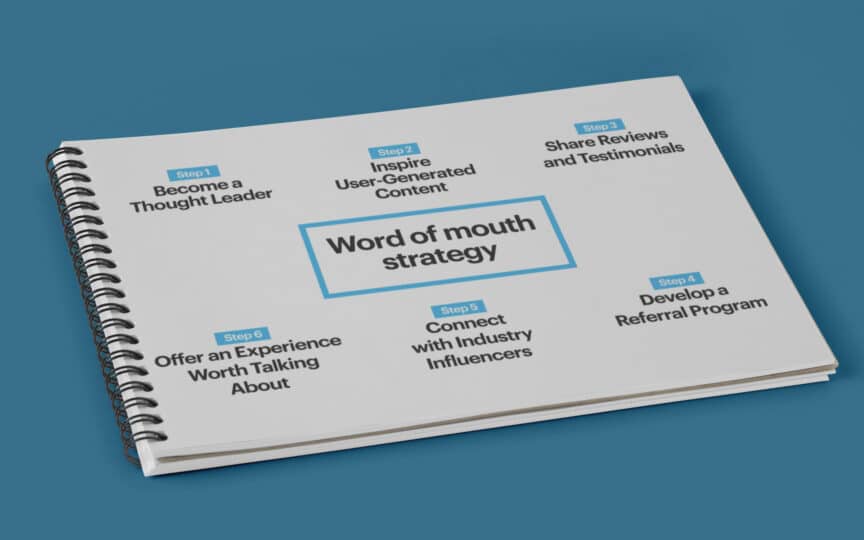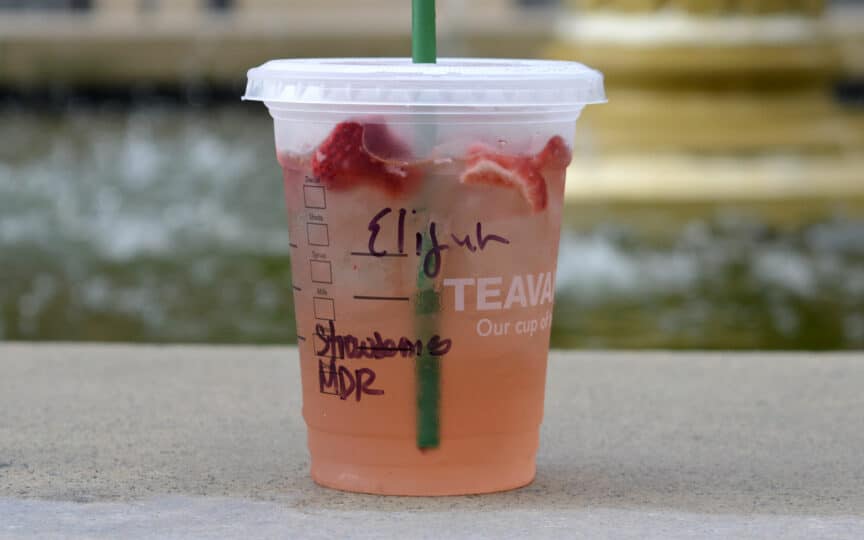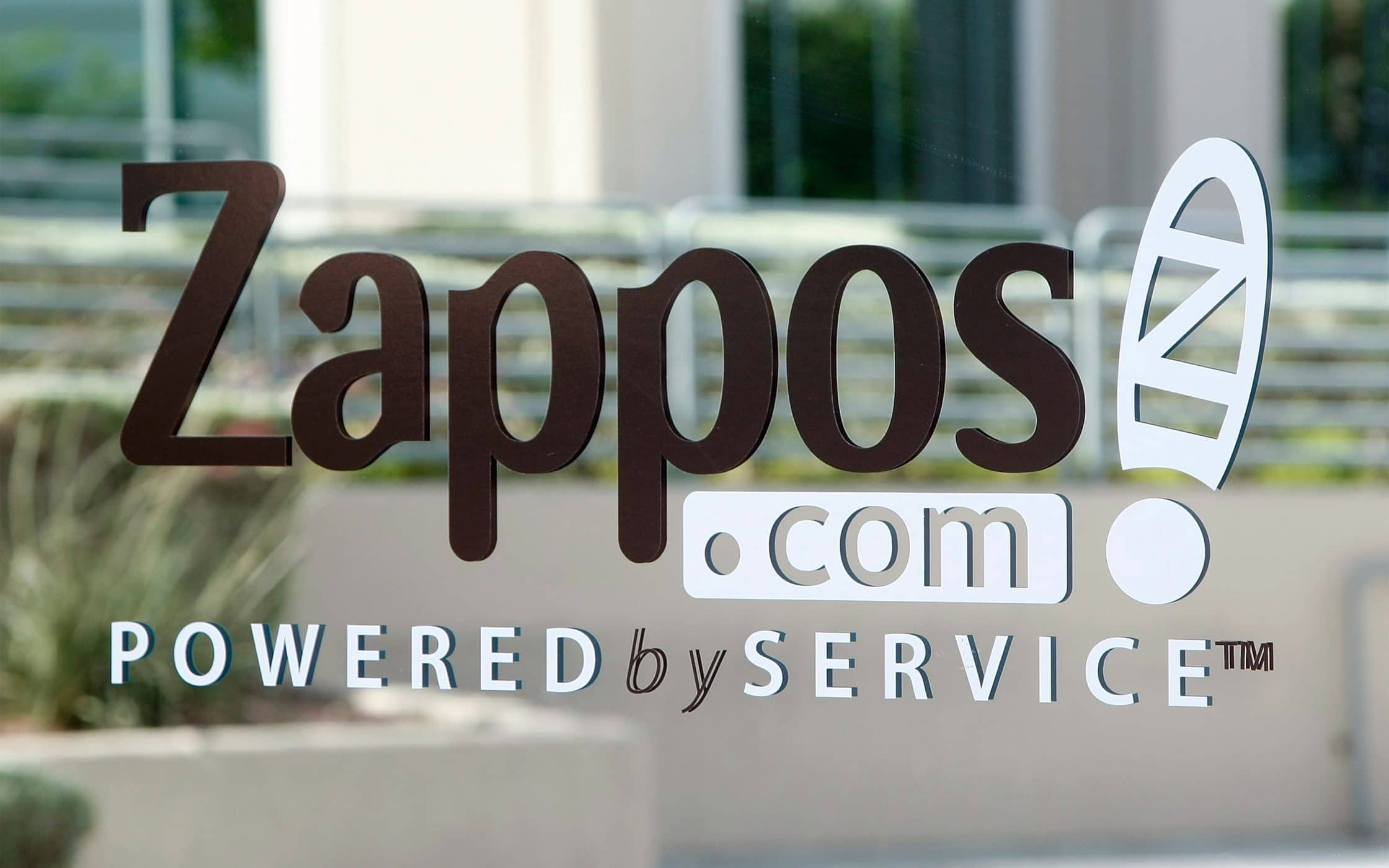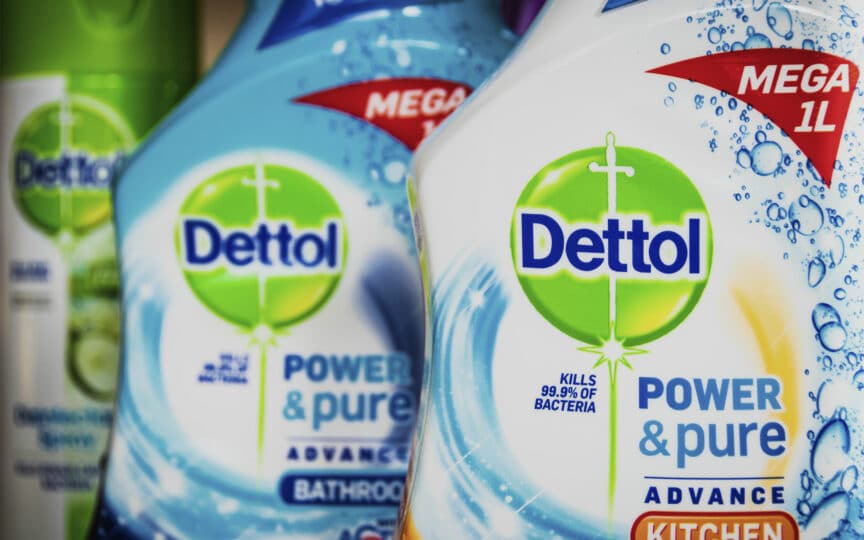The gift of gossip: How to master your word of mouth marketing strategy

For centuries, people have made decisions based not just on their own feelings, but also the general consensus of what their friends, family, and peers are saying.
It’s no coincidence that you and your best friends share a lot of the same things. After all, we all want to spend our money on the most valuable, and worthwhile products. What better way to identify what we need than to listen to the credible opinions of people we care about?
As brands begin to focus more heavily on inbound marketing for lead acquisition through organic channels, there’s a lot to gain from building your own word of mouth marketing strategy. Don’t believe us? Just look at the numbers:
- 74% of consumers believe word of mouth marketing is key to their purchasing decisions;
- Customers recommended to a business are 18% more likely to stay with that business for the long-term.
- 90% of customers believe the brand recommendations made by friends;
Word of mouth marketing doesn’t just impact B2C purchases either. According to research, word of mouth influences 91% of B2B buyers. With so many game-changing numbers to think about, it’s important for modern companies not to let the value of reviews, testimonials, ratings, and recommendations pass them by.
Fortunately, here at Fabrik, we’re all about generating positive buzz for your brand. As a marketing agency focused on business establishment and growth, we’re here to provide you with some key tips for word of mouth advertising. Here, we’ll tell you everything you need to know about building your own “WOMM” strategy.
Let’s get started.
Word of mouth marketing definition: What you need to know
You probably already have a basic word of mouth marketing definition in your mind. After all, word of mouth has been around for years. At its core, word of mouth marketing is about stimulating a conversation around your business. By building brand affinity through exceptional service and experiences, you can compel your customers to do your marketing for you.
Word of mouth marketing can easily make or break a business, as it all comes down to the power of conversation. Learn how to encourage word of mouth marketing correctly, and you’ll almost certainly be in a position to reduce your advertising budget, as customers will be eager to share your stories naturally.
Think about it – if you have a positive, incredible, or life-changing experience with a product or service, you’re going to want to share that experience with the people you care about. Heck, you might even start chatting with people at the bus stop just to get the word out.
This inherent desire to share our experiences is why 20-50% of purchases come from word-of-mouth recommendations. So, how can you take advantage of that? Well, it comes down to expanding your marketing efforts, evolving from the “four P’s” to the “three E’s”.
The three “E’s” of marketing represent where we’re headed with branding experiences today. They focus on the customers, rather than the brand, by allowing you to engage, equip, and empower your customers. For instance:
- Engage: You can engage your customers in a host of different ways. Respond to them on social media, interact with them through podcasts, even send them regular email updates. All this engagement is essential to an ongoing brand relationship.
- Equip: Provide your customers with a reason to talk about your brand. Don’t just share information, share the information your customers are looking for. Provide incredible facts, amazing entertainment, and revolutionary experiences.
- Empower: Make it easy for customers to advertise on your behalf. Get them involved with your company through polls and questionnaires. Encourage them to share opinions with reviews and testimonials. Show them that their opinions have an impact on your brand.

Killer tips for your word of mouth marketing strategy
Any good marketing agency will tell you that word of mouth marketing has business-altering power. Every happy customer could send dozens of new ones in your direction. However, like many of the most important elements in brand development, word of mouth marketing isn’t a quick fix for your problems. Word of mouth is a long journey that can provide a huge payoff at the end, so long as you’re willing to make the trek.
Long before social media started earning attention, or we generated authority with blogs, word of mouth was our natural go-to solution for learning and sharing valuable information. This is why word of mouth marketing remains one of the most effective forms of marketing out there.
Here are just a few steps to get you started in the development of your own word of mouth marketing strategy:
Step 1: Become a thought leader
People share ideas, thoughts, and concepts that make them look good. In other words, if they believe your brand is an industry leader, they’ll believe that sharing content from your brand makes them look clever. Establishing yourself as a thought leader can require some effort on your part. After all, you’ll need to keep up with the latest industry news, make predictions about your sector, and try to find ways of backing up your claims.
The path to thought leadership isn’t easy, but the long-term benefits can definitely be worth the sweat and tears. If people see your company as a thought leader, you’ll quickly end up with more word of mouth power than you can handle.
Step 2: Inspire user-generated content
User-generated content is content that’s created and shared by your audience, about your products or brand. It’s authentic, honest, and perfect for building trust. Overall, brand engagement increases by around 28% when customers see a combination of professional content and user-generated information. So, how can you develop “UGC” for your word of mouth marketing?
- Get customers to identify your brand with a unique hashtag on social media;
- Incentivise social sharing with a discount or feature;
- Develop a sense of community;
- Ask customers to share videos, pictures, and opinions in a host of different formats.
Step 3: Share reviews and testimonials
If you need to know how reliable a product or service is, what do you do? You look at the reviews. 90% of customers say that reviews influence their buying decisions. A simple testimonial can help to back up your brand claims and make new customers feel more comfortable doing business with you.
Testimonials can come in several different forms. You can ask your customers to write a review in exchange for a small discount on their next purchase, encourage them to share video reviews on YouTube, or simply respond to a message on social media. You might even implement a “star” or product-rating feature onto your site, so customers can offer their opinion with a single click.
Step 4: Develop a referral program
Possibly the easiest way to convince someone to “do you a favour”, is to offer them something in return. Coupons, incentive programs, and a range of other solutions can convince otherwise lazy or distracted customers to give your brand the boost it needs. Offering a simple or small discount on a future purchase can be a great way to encourage word of mouth.
A good referral program can even make it easier for you to measure your campaign results, so you know which elements need to change and improve. Remember to reward your biggest fans too. For instance, find a way to separate your most important customers into their own communication segment, then reach out to them with thank you’s, insights into the latest content, and even special vouchers and incentives. Your key referral customers should feel as though they’re part of a powerful, and exclusive club.
Step 5: Connect with industry influencers
Influencer marketing can be a powerful element of your marketing strategy, particularly if you’re struggling to build your online influence alone. Because of their pre-established reputation, word of mouth marketing from an influencer can be an incredible bonus for your brand. Around 71% of consumers are more likely to make a purchase after a social media reference.
All you need to do to get started is begin appealing to the right influencers. Look for ways that you can quote the most valuable names in your sector in your content, or feature them in your services/products prominently.
Step 6: Offer an experience worth talking about
Ultimately, if you want people to start gossiping about your products and services, then you need to give them a reason to do that. Word of mouth advertising thrives on share-worthy experiences. If you give your customers a memorable moment that they couldn’t get anywhere else, then they’ll be enticed to share that experience with their loved ones – regardless of whether you ask them to or not.
Make your customer happy with more than just a top-notch product or service. Provide complete and consistent customer service across all your marketing channels. Segment your audience so that you can send them more relevant information over emails and blogs. Ask for feedback, then use that feedback to improve. Ultimately, show your customers that they’re your priority.
Word of mouth marketing examples: Brands that own “WOMM”
Need more proof that word of mouth marketing works? Just look around at the brands that are seeing killer results today. Sure, these brands often have a lot of different elements working together to help them achieve success, from exceptional social media marketing, to the best marketing agencies that money can buy – but they still use word of mouth.
To help inspire you with your own campaigns, here are a few word of mouth marketing examples from brands that own the world of online conversation.
1. Word of mouth examples: Starbucks and an empire of sharing
Starbucks is more powerful in the word of mouth marketing space than you might think. Back when the company emerged in Seattle during 1971, it was nothing more than a simple coffee store. However, today, Starbucks is a global Goliath, and it owes its fame, not to traditional marketing – but word of mouth advertising.

Starbucks invests a lot of money into their social media presence, constantly encouraging new comments and suggestions from their customers. They also have a pretty sneaky solution for getting people to talk about their brand more often. By spelling your name incorrectly on purpose, they encourage you to join in with a community of people that share images of Starbucks cups online, spreading brand awareness.
2. Word of mouth examples: Make-a-wish and emotional conversations
There are plenty of ways to use word of mouth marketing, but one of the most effective focuses on the “emotional” side of advertising. People are inherently more likely to share a brand experience that makes them feel something. Whether that feeling is sad, angry, happy, empowered, or excited – emotions drive us into action.
In 2013, the Make-a-Wish Foundation made the most of emotional marketing to share their “Batkid” story. Following a day in the life of a five-year-old with Leukemia, the promotional event took the world by storm, leading to 1.89 million social impressions, 555,697 hashtags, and a huge increase in Make-a-Wish donations.
3. Word of mouth examples: Chipotle and digital chatter
Chipotle is a hugely well-known restaurant chain that differentiates itself from its competitors by sourcing completely local ingredients. To create a conversation around their unique position, Chipotle decided to create some fun with an iOS game called “The Scarecrow”, as well as a companion video designed to share a powerful visual narrative with their customers.
Chipotle’s word of mouth marketing campaign worked because it was fun, engaging, and different. They combined powerful storytelling with exceptional online distribution to generate a huge amount of awareness for their brand. The result of the scarecrow scheme was more than 614 million impressions on social media.
4. Word of mouth examples: Zappos and customer service buzz
Do a little research on Zappos, and you’ll find that there are very few things this company has done wrong in the world of advertising. When it comes to public relations, marketing, customer service, and so on, Zappos know what they’re doing. The same goes for Zappos’ word of mouth marketing campaigns.

According to CEO Tony Hsieh, Zappos purposefully budgeted to ensure incredible customer service, at the expense of advertising for their company. Zappos hoped that they could avoid investing in traditional marketing by driving their business forward through repeat business and word of mouth. The result of this bet was more than $2 billion in sales during 2014.
5. Word of mouth examples: Dettol and targeted talk
Last, but not least, Dettol has been around for quite a while now – since the 1950s. When the brand expanded to China, they found that very few people knew about Dettol, or what it could do, which is why they decided to plan a word of mouth advertising campaign.

The unique campaign focused on reaching out to influential mums across the country with samples of the product. Dettol also focused on “gamifying” the experience, to encourage more discussion among their influencers online. Ultimately, the campaign reached 46% of its target audience. Brand awareness increased by about five times, and purchase increase doubled. At the end of the campaign, sales had increased by 86%, just from word of mouth marketing.
Word of mouth advertising: Making it work for you
Alright, so you know what made word of mouth marketing work for the companies outlined above, and hopefully, you understand how to begin your word of mouth marketing strategy. Now, let’s look at some of the things you can do to make word of mouth really work for your company. Remember, word of mouth can be powerful, and even simple, but it’s not a one-size-fits-all solution. Tailor your campaign to meet the needs of your brand and your audience, and you’ll see better results.
Here’s how to get started:

1. Get to know yourself
It might surprise you to learn that many companies try to jump head-first into advertising campaigns and digital marketing trends, without taking the time to identify their company and what they’re all about. Unfortunately, if you don’t know yourself, then you can’t offer a consistent experience to your audience. Ultimately, you want your customers to be sharing similar opinions about your company. The more testimonials, comments, and reviews reinforce a specific idea of your brand, the more trustworthy your business becomes.
2. Evaluate your competition
Competitive analysis is another strategy we frequently recommend at Fabrik. Being aware of your competitors is crucial to staying a step ahead of them. Think about how your competitors interact with your customers, and what you can do better than them. By analysing your competitors properly, you can create a word of mouth marketing strategy that helps you really stand out, and strengthen your own unique qualities.
3. Define your audience
Understanding your audience is key to any marketing strategy. The more you know about your user and buyer personas, the more you can craft products, experiences, services, and marketing campaigns that focus on their unique preferences and needs. Customers like to feel as though they’re getting something tailor-made for them, so get to know your audience.
4. Use exclusivity
We all want to be “special”. Offering exclusive access to products, services, and discounts for your most engaged customers, and those who are willing to refer you to their friends can be a great way to improve your word of mouth marketing tactics. For instance, Spotify began their growth in the business world with access provided by invitation only.
5. Discover what makes you special
For your brand to become truly exceptional, you need to have something about you that’s memorable. Maybe you’ve got a one-of-a-kind product or a quirky culture that makes people smile when they’re talking about you. Identify what makes your brand special, and work to capitalise on that so that people want to share your story with the world. For instance, consider the Old Spice “The Man Your Man Could Smell Like” campaign, a unique story and word of mouth marketing earned the brand 5.9 million YouTube views in one day.
6. Develop an engaged social community
Today, about 72% of marketers are using social media to develop more loyal fans – and, why wouldn’t they? Social media is great for building brand relationships, and it’s an essential element in your word of mouth marketing strategy. This is where it becomes incredibly important to truly know your audience. You’ll need to understand your customers to figure out where and how they communicate online.
7. Offer a “human” touch
Finally, the more people connect and communicate with your brand, the more likely they are to start recommending you to others. This is essential for your word of mouth marketing strategy. To build a stronger connection with your audience, look for ways to add a human touch to your methods. For instance, respond to comments on social media, implement emotion into your videos and blog posts, share insights into the “behind the scenes” of your business. The possibilities are endless.

Is it Time to embrace word of mouth marketing?
Word of mouth marketing might be one of the oldest branding techniques in the world – but it’s also one of the most effective. We automatically feel more inclined to believe the opinions and thoughts of our friends, than the big-name brands we know nothing about.
The good news? Word of mouth marketing isn’t just a powerful way to start growing your brand, and earning long-term repeat customers for your business – it could be the most cost-effective way to start cultivating profits, too. Think about it. All it takes to make your word of mouth marketing strategy a success is one happy customer who feels encouraged to share their story with the world.
If you can focus on delighting your customers, implementing simple ways to encourage word of mouth marketing, and of course, staying ahead of your competition with unique experiences, then you’ll find yourself getting more business than you know what to do with.
With the help of great marketing agencies, you can build upon your word of mouth marketing promotions with unique and engaging solutions like social media strategies, vlogging, and blog posts, all of which add value and authority to your business. Over time, you’ll find that you create a company that’s not just successful – it essentially markets itself.
What are you waiting for? Now’s the time to get your customers talking.
If you enjoyed this article, you might enjoy these too:
— How to build a brand recognition strategy
— Brand engagement, the rules of attachment











